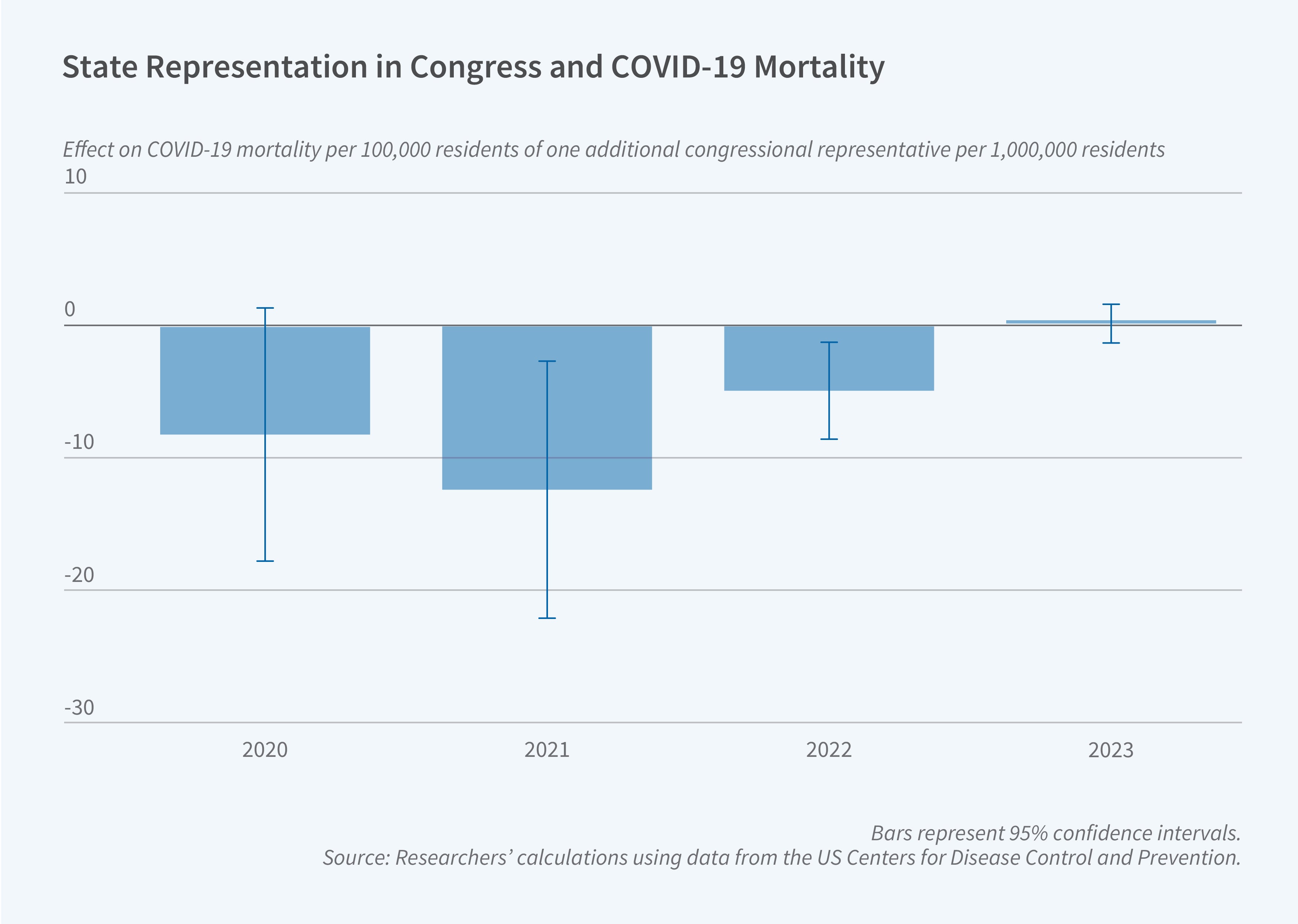Federal Fiscal Aid to State and Local Governments and COVID-19 Mortality

During the COVID-19 pandemic, the US federal government provided nearly $1 trillion in fiscal assistance to state and local governments with the goal of supporting public health, public schools, and local economic recovery. In Health Impacts of Federal Pandemic Aid to State and Local Governments (NBER Working Paper 33699), Jeffrey Clemens and Anwita Mahajan investigate how federal fiscal assistance affected population health.
An additional $1,000 in federal aid per resident was associated with 26 fewer COVID-19 deaths per 100,000 residents.
To address the potential endogeneity of aid, namely the possibility that more aid flowed to states that were harder-hit by COVID-19, the researchers leverage the fact that states with greater congressional representation per capita received substantially more per capita federal funding in the COVID-19 relief bills. This political source of variation in federal aid provides an opening to measure the impact of this aid on public health.
The researchers estimate that each additional $1,000 in federal aid per state resident led to 38 fewer deaths per 100,000 residents from all causes over the 2020-22 period. Approximately two-thirds of these reduced deaths (26 per 100,000) would have been specifically from COVID-19. Reductions in COVID-19 mortality were not offset by increases in deaths from other causes but were complemented by modest declines in non-COVID-19 mortality, in particular from respiratory disease and hypertension.
Federal aid also reduced rates of COVID-19 hospitalizations and emergency department visits by approximately 214 and 1,170 per 100,000 residents, respectively. It did not, however, reduce the total number of COVID-19 cases detected, which may have been driven by more expansive testing.
States receiving more aid conducted substantially more COVID-19 testing and administered more vaccinations, with an additional senator or representative per million residents predicting an additional 83,228 tests and 7,755 vaccinations per 100,000 residents. Increased vaccination rates may have accounted for about half of the reduction in COVID-19 mortality.
Federal funding had a larger positive impact on survival rates for non-Hispanic Black Americans than for non-Hispanic White Americans. The researchers estimate that had states not received the last $1,000 in aid per resident, the age-adjusted COVID-19 mortality ratio between Black and White Americans would have been 1.47. They estimate that this last $1,000 in per capita federal aid reduced this ratio by 22 percent.
The researchers estimate that the last $331 billion in aid to states and localities, which corresponds to the in-sample variation in the data, generated approximately $591 billion in value based on their estimates of the number of lives saved and on conventional estimates of the value of a statistical life.


